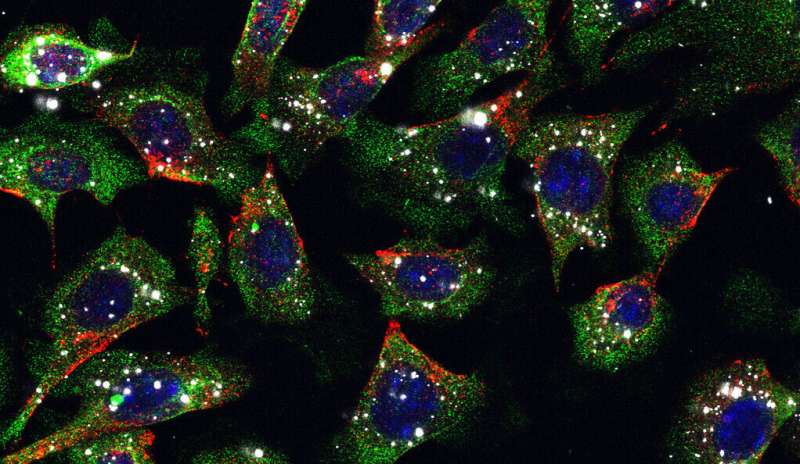
Yale researchers are developing a skin cancer treatment that involves injecting nanoparticles into the tumor, killing cancer cells with a two-pronged approach, as a potential alternative to surgery.
The results are published in the Proceedings of the National Academy of Sciences.
“For a lot of patients, treating skin cancer is much more involved than it would be if there was a way to effectively treat them with a simple procedure like an injection,” said Dr. Michael Girardi, professor and vice chair of dermatology at Yale Medical School and senior author of the study. “That’s always been a holy grail in dermatology—to find a simpler way to treat skin cancers such as basal cell carcinoma and squamous cell carcinoma.”
For the treatment, tumors are injected with polymer-based nanoparticles carrying a chemotherapy agent. Key to the treatment’s success is that the nanoparticles are bioadhesive—that is, they bind to the tumors and remain attached long enough to kill a significant number of the cancer cells.
“When you inject our nanoparticles into a tumor, it turns out that they’re retained within that tumor very well,” said co-author Mark Saltzman, the Goizueta Foundation Professor of Biomedical Engineering, Chemical and Environmental Engineering, and professor of physiology. “They accumulate and bind to the tumor matrix, so one single injection lasts for a very long time—the particles stay there and slowly release the compounds. You need that to get rid of the lesion.”
For comparison, the same drug was injected freely into tumors of control models without the nanoparticles. They found that the tumors were significantly more diminished when the drugs were delivered by nanoparticles.
Also critical to the therapy is that the treatment can be combined with an agent that stimulates the body’s immune system.
“I call the phenomenon ‘kill and thrill,'” Girardi said. “You don’t want to just kill the cells and leave them there, you want to stimulate the immune system to clean up the mess and also react against cells that might not have been killed directly. So it’s a two-pronged attack on the cancer.”
In many cases, ridding tumors with an injection could eliminate the need for surgery, the researchers said. It may also then avoid potential wound infections and other complications. Additionally, some patients with other medical conditions are poor candidates for surgery.
An injection-based therapy would also mean that patients could have multiple tumors treated in a single visit.
“In these studies, we did just a single injection, and that’s how we’d like it to work clinically,” Saltzman said. “You go to a dermatologist, they see a lesion and inject into it, and it’s gone and you don’t have to come back.”
Saltzman’s lab, which specializes in nanoparticles, worked to optimize the particles’ drug-carrying ability to deliver as much of the chemotherapy agent in a single dose as possible. Because the contents of the nanoparticle remain at the site of the tumor, the delivery system allows for the use of particularly powerful drugs. Conventional chemotherapy affects the entire body and can have severe side effects, so the toxicity of drugs is more limited.
Girardi and Saltzman are working with the start-up company Stradefy Biosciences Inc., which plans to advance the technology’s preclinical development and then conduct clinical trials.
Source: Read Full Article


